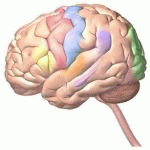Neurology
|
9 april 2011 11:34:37 |
| Robot-aided therapy for upper limbs in patients with stroke-related lesions. Brief report of a clinical experience. (Journal of NeuroEngineering and Rehabilitation) |
|
Tweet This study was aimed at verifying the improvement on the motor impairment and functionality in 19 patients with chronic hemiparesis after stroke treated with a robot-aided rehabilitation protocol using the ReoGoTM system (Motorika Medical Ltd, Israel), and at evaluating the persistence of the effects after 1 month. The study also focused on the actual possibility of administering the robot-aided therapy with the ReoGoTM for the upper limbs and on the patients` degree of acceptance and compliance with the treatment. Subjects underwent an assessment prior to the start of the rehabilitation project (T-1), one at the start (T0), one at the end of the treatment (T1) and one after one month from the end of the treatment (T2). The following tests were administered: (i) Fugl-Meyer (FM) upper limb; Ashworth scale (AS); Functional Independence Measure (FIMTM) (T-1 - T2); (ii) strength evaluation; Visual Analogue Scale (VAS) for pain; Frenchay Arm test (FAT); Box and Block test (BBT); Timed Up and Go (TUG) test (T0 - T2). Additionally, the Euro-QoL questionnaire and a VAS for the treatment satisfaction were administered to the subjects. Non-statistical difference of scores at T-1 and T0 on almost the entire battery of tasks suggested a stable patients` performance prior to the start of the rehabilitation. With the exception of the Medical Research Council (MRC) and the AS sub-scales measuring -as appropriate- strength and spasticity of the shoulder, triceps and wrist, all scores showed a significant increase between T0 and T1. The improvement on the pain could not be proved significant (p=0.10). A significant increase between T0 and T2 was found for all assessment scores, with the exception of the MRC for external shoulder rotators (p=0.05) and of the AS for shoulder (p=0.32) and wrist (p=0.08). Substantial stability was observed between T1 and T2. Patients were capable of completing the treatment and showed good participant satisfaction. This pilot study led to the finding of a clinical improvement and excellent patients compliance. It is possible that the learning process experienced by the patients was robot-dependent, especially in consideration of the general maintenance of the achievements observed on all activities. |
| 382 viewsCategory: Neurology |
 Expression of tumor necrosis factor-alpha and interleukin-1beta genes in the cochlea and inferior colliculus in salicylate-induced tinnitus (Journal of Neuroinflammation) Expression of tumor necrosis factor-alpha and interleukin-1beta genes in the cochlea and inferior colliculus in salicylate-induced tinnitus (Journal of Neuroinflammation)Fine-scale differences in diel activity among nocturnal freshwater planarias (Platyhelminthes: Tricladida) (Journal of Circadian Rhythms) 
|
| blog comments powered by Disqus |
MyJournals.org
The latest issues of all your favorite science journals on one page
The latest issues of all your favorite science journals on one page



